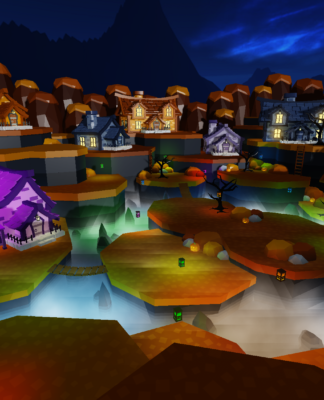Childbirth is one of life’s most incredible yet terrifying experiences. The hype and joy of bringing a child into the world are always too much. Though the fear of pain frequently accompanies it.Although the pain of labor and delivery is discussed widely, other aspects, such as motherly birth injuries, are frequently overlooked by new mothers. Depending on the type, a birth injury can cause minor discomfort, long-term pain, or change in certain bodily functions. Some birth injuries are inevitable and a normal part of the process—albeit they impactthe mother’s psychological or physical well-being.
Unfortunately, some injuries are incurred or exacerbated when healthcare practitioners and doctors make errors during a mother’s pregnancy, labor, or delivery. Such errors are preventable, but due to the medical team’s ignorance or carelessness, they become birth malpractice incidents. In this case, the family can always go for a claim, compensation, or a lawsuit.
Some birth injury impacts on the mother are listed below:
Ruptured Uterus
One of the most dangerous risks that arise during childbirth is uterine rupture. A uterus rupture is a rare pregnancy contraindication in which the uterine wall suddenly tears open. The tear in a severely ruptured uterus goes through all of the folds of the uterus wall, creating an opening through which the baby can come out. In such cases, the newborn always has severe oxygen deprivation.
A uterine rupture is a dangerous event that can have consequences for both the baby and the mother. Even if doctors intervene immediately and undertake a case of emergency C-section within 10-30 mins of a diagnosis, it may not be sufficient to prevent oxygen deprivation and severe infant brain injury.
Vaginal Tears
A baby’s head may experience difficulty during childbirth, resulting in fractures in the vaginal opening. It is a type of perineal laceration, an injury in the tissue surrounding your vagina and perineum, the space between the vaginal canal and your anus. It can happen when the vaginal wall is too tight to cater to the baby’s head. Premature births, baby placement, forceps-assisted deliveries, or even being overweight can be other reasons. All in all, it can have a traumatic effect on the mother inducing her with long-term pains.
Post-Natal Depression (PND) And Post-Natal Post-Traumatic Stress Disorder (PTSD)
The process of giving birth is stressful, but sometimes, it can be extremely overwhelming for a new mother. Most new mothers experience the baby blues after childbirth, which include mood swings, anxiety, and difficulty sleeping. When these blues become excessive and regular, it can be a sign of PND, which usually start a few days after delivery and can last up to weeks.
Although the precise causes of PND are unknown, the enormous physical, emotional, and social changes associated with becoming a mother appear to be a contributing factor. It is not a flaw or a weakness. Anything from long and strenuouslabor to an unexpected intervention or general concerns about your or your baby’s safety can play a part. While the signs of post-traumatic stress disorder (PTSD) and post-natal depression (PND) may be comparable, the two illnesses are not the same. It is critical that PTSD be identified as such and not handled as PND.
Post-Partum Hemorrhage (PPH)
PPH is severe vaginal bleeding following childbirth. PPH can occur immediately after birth or up to 13 weeks later. During pregnancy, your amniotic sac attaches to the uterine wall and delivers food and oxygen to your baby. Your womb continues to contract after your baby is born to provide the placenta. Labor pains also help to condense the blood vessels that connect the placenta to the uterine wall. These contractions aren’t always strong enough to prevent bleeding.
Other symptoms of postpartum hemorrhage include dizziness, faintness, and blurred vision. Postpartum hemorrhage is a potentially fatal medical condition. You can lose a lot of blood quickly if you have PPH. It causes a significant decrease in blood pressure and constraints blood flow to the brain and other organ systems.
Prolapsed Uterus
The uterus prolapses when it slips out of its regular place and into the vaginal opening. A prolapsed womb or other abdominal organ is usually not life-threatening. However, it can drastically impact the mother’s quality of life and general well-being.
Pelvic organ prolapse can also occur as a result of childbirth. After the birth injury, muscles and tissue samples of the pelvic floor become too weak to support the weight of the uterus. It’s where one or more pelvic organs protrude into the vagina. It’s prevalent, and the NHS estimates that about half of all mothers have some degree of prolapse. Pelvic organ prolapse is more common when labor is long and arduous or when the baby is large.
Bone Injury
Bone injuries are another cause of birth injuries. As a result of childbirth, some women may sustain bone injuries. This type of issue includes a fractured coccyx and a separated pubic symphysis. A separated pubic symphysis occurs when the baby’s head causes the pelvic symphysis, the cartilage section connecting the left and right bones of the pelvic girdle, to separate, resulting in a gap.
It can cause irritation and pain for as short as two months, but it can take up to eight months to recover. The mother’s coccyx may fracture or blister due to the pressure from the baby’s head during delivery if she has a fractured coccyx.
Nerve Injury
Another potential issue mothers frequently overlook before giving birth is nerve damage. The most frequent source of nerve damage is pressure on the nerve endings in the back or pelvis during labor or delivery. It is more common in first-time mothers, those who have tried to push for a long time, and in scenarios where we use tweezers during the baby’s delivery.
Mothers can experience a variety of issues relying on the nerve endings that are damaged. Injury to the femoral nerves can result in weakness or numbness in the legs, rendering it difficult to feel or start moving them. Incontinence is another issue caused by nerve damage, which occurs when the pelvic and pudendal nerves are badly hurt during delivery. Nerve damage can occur during delivery or when skin is stretched. Without treatment, such injuries take a long time to recover.
CONCLUSION
The traumas and birth injuries that a mother goes through cannegatively impact her physical and mental health, and they should be treated immediately upon serious action. If left untreated, it leaves a long-lasting impact on her reproductive health.
It’s important to recognize the signs of birth injury and their later impact so both mother and the child can grow up happy and healthy.


























